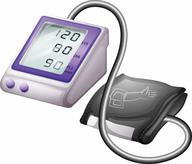High Blood Pressure After Pregnancy: What to Know
High blood pressure after pregnancy, or postpartum hypertension, is blood pressure that is higher than normal after childbirth. It's most common within 1 to 2 days after delivery, but it can happen later. Sometimes, it can happen up to 12 weeks or more after pregnancy.
Some people have to have medical treatment to control high blood pressure and prevent serious complications.
What are the causes?
The cause of this condition is not well understood. In some cases, the cause may not be known. Certain conditions may increase your risk. These include:
Hypertension that existed before pregnancy (chronic hypertension).
Hypertension that happens as a result of pregnancy (gestational hypertension).
Hypertensive disorders during pregnancy or seizures in women who have high blood pressure during pregnancy. These conditions are called pre-eclampsia and eclampsia.
A condition in which the liver, platelets, and red blood cells are damaged during pregnancy (HELLP syndrome).
Obesity.
Diabetes.
What increases the risk?
If you had blood pressure problems during pregnancy, you're more likely to get this condition after giving birth. However, you can still have high blood pressure after delivery even if you didn't have problems during pregnancy.
What are the signs or symptoms?
Signs and symptoms may include:
Headaches. These may be mild, moderate, or severe. They may also be steady, constant, or sudden (thunderclap headache).
Vision changes, such as blurry vision, flashing lights, or seeing spots.
Nausea and vomiting.
Pain in the upper right side of your abdomen.
Shortness of breath or trouble breathing.
Swelling in your face or hands.
A decrease in the amount of urine that you pass.
You may not have any signs or symptoms.
How is this diagnosed?
This condition may be diagnosed based on the results of a physical exam, blood pressure measurements, and blood and pee (urine) tests.
You may also have other tests, such as a CT scan or an MRI, to check for other problems.
How is this treated?
If blood pressure is high enough to require treatment, your options may include:
Medicines to reduce blood pressure (antihypertensives). Tell your health care provider if you are breastfeeding or if you plan to breastfeed. There are many antihypertensive medicines that are safe to take while breastfeeding.
Treating medical conditions that are causing hypertension.
Treating the complications of hypertension, such as seizures, stroke, or kidney problems.
Your health care provider will also continue to closely watch your blood pressure.
Follow these instructions at home:
Learn your goal blood pressure
Two numbers make up your blood pressure. The first number is called systolic pressure. The second is called diastolic pressure. An example of a blood pressure reading is "120 over 80" (or 120/80). Ask your health care provider what your goal blood pressure is.
Know how to take your blood pressure
To check your blood pressure, follow the instructions in the manual that came with your blood pressure monitor. This includes any instructions on what to do before taking your blood pressure.
Record your blood pressure readings

Follow your health care provider's instructions on how to record your blood pressure readings. Your health care provider may ask you to:
Get one reading in the morning (a.m.) before you take any medicines.
Get one reading in the evening (p.m.) before supper.
Take at least 2 readings with each blood pressure check. This makes sure the results are correct. Wait 1–2 minutes between measurements.
General instructions
-
Take over-the-counter and prescription medicines only as told by your health care provider.
-
Do not use any products that contain nicotine or tobacco. These products include cigarettes, chewing tobacco, and vaping devices, such as e-cigarettes. If you need help quitting, ask your health care provider.
-
Check your blood pressure as often as told by your health care provider.
-
Return to your normal activities as told by your health care provider. Ask your health care provider what activities are safe for you.
-
Keep all follow-up visits. Your health care provider will continue to closely watch your blood pressure.
Contact a health care provider if:
- You have new symptoms, such as:
These symptoms may be an emergency. Get help right away. Call 911.
This information is not intended to replace advice given to you by your health care provider. Make sure you discuss any questions you have with your health care provider.
 Follow your health care provider's instructions on how to record your blood pressure readings. Your health care provider may ask you to:
Follow your health care provider's instructions on how to record your blood pressure readings. Your health care provider may ask you to: